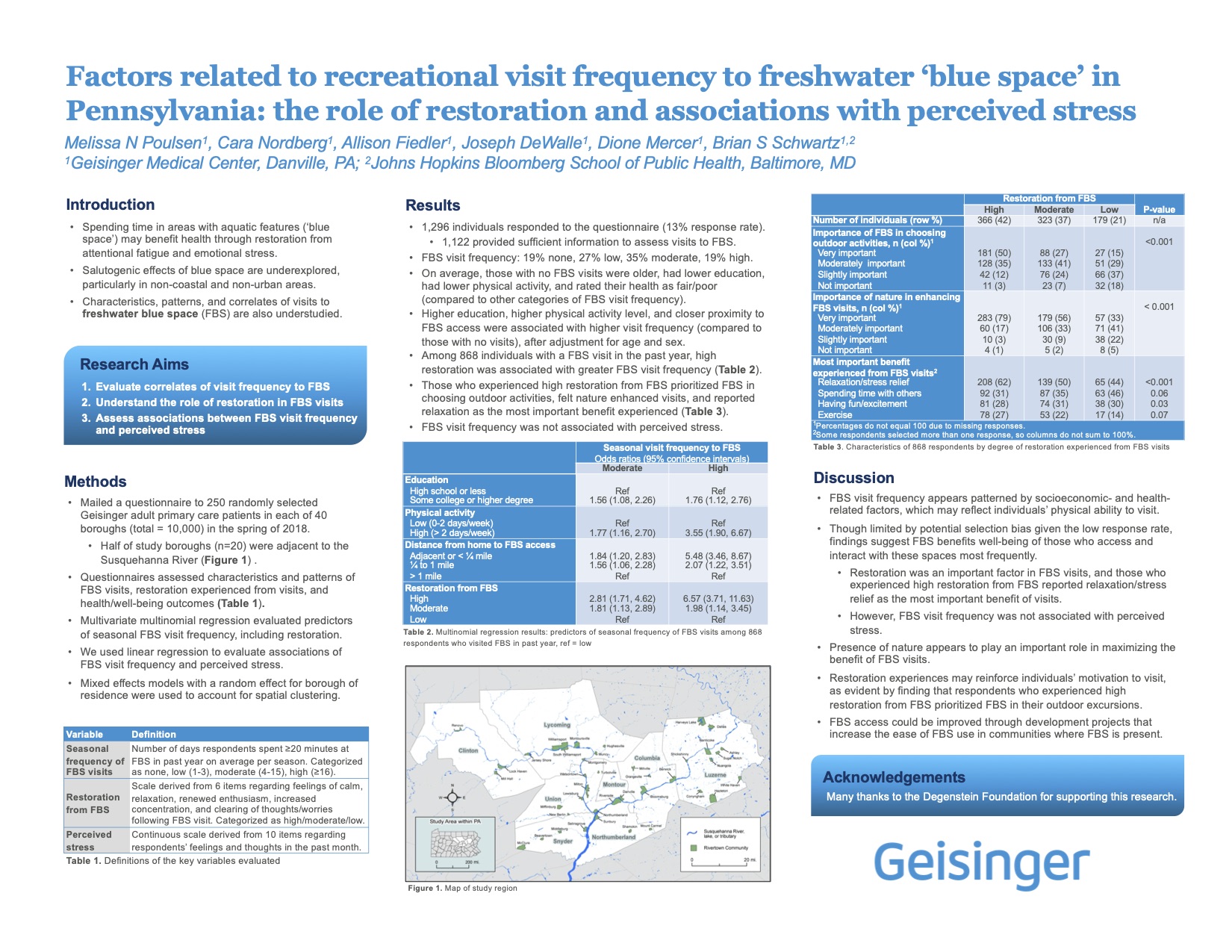Author:
Melissa PoulsenCo-Authors:
Melissa N Poulsen, Cara Nordberg, Allison Fiedler, Joseph DeWalle, Dione Mercer, Brian S SchwartzInstitution:
GeisingerAbstract
Spending time in areas with aquatic features (‘blue space’) may benefit health through ‘restoration’ from attentional fatigue and emotional stress. Salutogenic effects of blue space remain underexplored, particularly in non-coastal and non-urban areas, as do correlates of visit frequency to freshwater blue space (FBS). We surveyed adults in 40 small towns in central/northeast Pennsylvania to understand their seasonal visitation patterns to FBS, characteristics that predict visit frequency, and associations between FBS visit frequency and perceived stress. Of 10,000 mailed questionnaires, 1,122 individuals (11%) responded and provided information to characterize FBS visit frequency. Perceived stress was evaluated with a scale of 10 items regarding stressful feelings in the past month. A restoration outcomes scale from FBS was calculated for respondents who reported visiting FBS (n=868). Analyses included multivariate multinomial regression to examine predictors of FBS visit frequency and linear regression to evaluate FBS visit frequency in association with perceived stress, using mixed effects models with a random effect for town of residence to account for spatial clustering. Nearly one-fifth (19%) of respondents reported never visiting FBS, 27% had low visit frequency (1-3 days/season), 35% moderate frequency (4-15 days/season), and 19% high frequency ( 16 days/season). Higher education was associated with more frequent blue space visits across all categories of visit frequency. Greater physical activity and living closer to FBS access points were associated with moderate and high visit frequency. High restoration was associated with greater visit frequency among those who visited FBS. Individuals who experienced high restoration were more likely to report the presence of nature as important in enhancing visits to FBS and stress relief as the most important benefit of FBS visits. FBS visit frequency was not associated with perceived stress. Findings highlight the socioeconomic patterning of FBS visits, the importance of access to facilitate visits, and perceived psychological benefits to FBS visits among the most frequent visitors.
